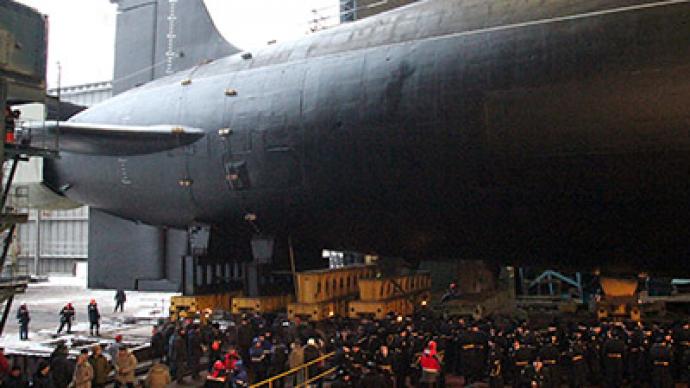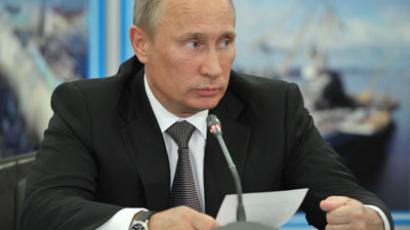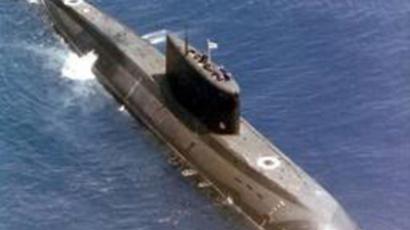Silent sub: Russian noiseless Borei class nuclear submarine immersed

Super-modern, powerful and almost noiseless Russian nuclear submarine Vladimir Monomakh has been put in water to become the third ship of the Borei project. The cruiser is about to begin sea trials and mooring to become fully operational in 2013.
Vladimir Monomakh was laid down at Russia’s largest shipbuilding complex Sevmash, located on the shores of the White Sea in the town of Severodvinsk in northern Russia on March 19, 2006 – the 100th anniversary of the Russian submarine fleet.
Borei-class submarineLength: 170 mBeam: 13.5 mDraught: 10 mTest depth: 450 mDisplacement: 14,720 tons surfaced24,000 tons submergedSpeed: 29 knots (54 km/h)Complement: 107 (55 officers)Armament: 16-20 × Bulava SLBMs6 × 533 mm torpedo tubes
It belongs to a class of missile strategic submarine cruisers with a new generation of nuclear reactor, which allows the submarine to dive to a depth of 480 meters. It can spend up to three months in autonomous navigation and, thanks to the latest achievements in the reduction of noise, it is almost silent compared to previous generations of submarines.The submarine is armed with the new missile system, which has from 16 to 20 solid-fuel intercontinental ballistic missiles Bulava (SS-NX-30 by NATO classification). The rocket is able to overcome any prospective missile defense system.On August 27, 2011, the Russian Defense Ministry reported on a successful test of Bulava to investigate its maximum range. The missile was launched from the White Sea, flew 9,300km in just 33 minutes, and then fell in the specified area in the Pacific Ocean.All Borei class submarines are equipped with a floating rescue chamber designed to fit in the whole crew.
The Borei familyThe first and head submarine of Borei class, Yury Dolgoruky, has already completed the test program and is to be officially adopted by the Russian Navy on Sunday. Construction of the missile carrier is approximately estimated at around US$770 million, while other Borei class submarines are believed to cost less.“The hoisting of the flag and the signing of the acceptance act is to be adopted at the Sevmash shipyard in Severodvinsk on Sunday, December 30,” the Rubin design bureau that designed the submarine said in a statement on Saturday.Another missile cruiser of this project, the Aleksandr Nevsky, is undergoing tests, according to Borisov. While a fourth, more advanced submarine, the Knyaz Vladimir, with enhanced technical characteristics and increased ammunition is currently being built.Over the next eight years Russia plans to have built 10 Borei class submarines altogether, according to the state armaments program of 2011-2020. All Borei class submarines are believed to provide a basis of naval strategic nuclear forces of Russia in the coming decades.














